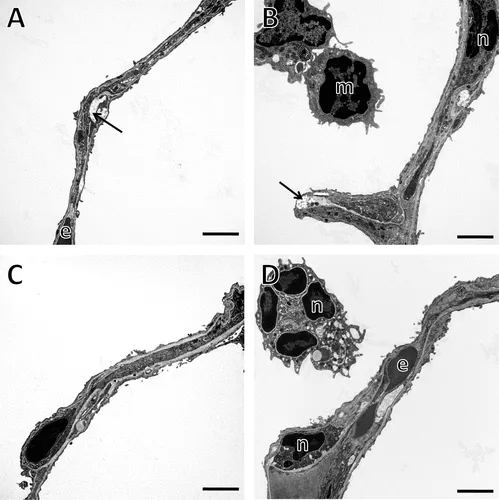Kling, K.M., Lopez-Rodriguez, E., Pfarrer, C., Mühlfeld, C., Brandenberger, C.: Am J Physiol-Lung C. 2017;312(1):L1-L12.
To access the full article, click here:

Acute lung injury (ALI) is characterized by hypoxemia, enhanced permeability of the air-blood barrier, and pulmonary edema. Particularly in the elderly, ALI is associated with increased morbidity and mortality. The reasons for this, however, are poorly understood. We hypothesized that age-related changes in pulmonary structure, function, and inflammation lead to a worse prognosis in ALI. ALI was induced in young (10 wk old) and old (18 mo old) male C57BL/6 mice by intranasal application of 2.5 mg lipopolysaccharide (LPS)/kg body wt or saline (control mice). After 24 h, lung function was assessed, and lungs were either processed for stereological or inflammatory analysis, such as bronchoalveolar lavage fluid (BALF) cytometry and qPCR. Both young and old mice developed severe signs of ALI, including alveolar and septal edema and enhanced inflammatory BALF cells. However, the pathology of ALI was more pronounced in old compared with young mice with nearly sixfold higher BALF protein concentration, twice the number of neutrophils, and significantly higher expression of neutrophil chemokine Cxcl1, adhesion molecule Icam-1, and metalloprotease-9, whereas the expression of tight junction protein occludin significantly decreased. The old LPS mice had thicker alveolar septa attributable to higher volumes of interstitial cells and extracellular matrix. Tissue resistance and elastance reflected observed changes at the ultrastructural level in the lung parenchyma in ALI of young and old mice. In summary, the pathology of ALI with advanced age in mice is characterized by a greater neutrophilic inflammation, leakier air-blood barrier, and altered lung function, which is in line with findings in elderly patients.




